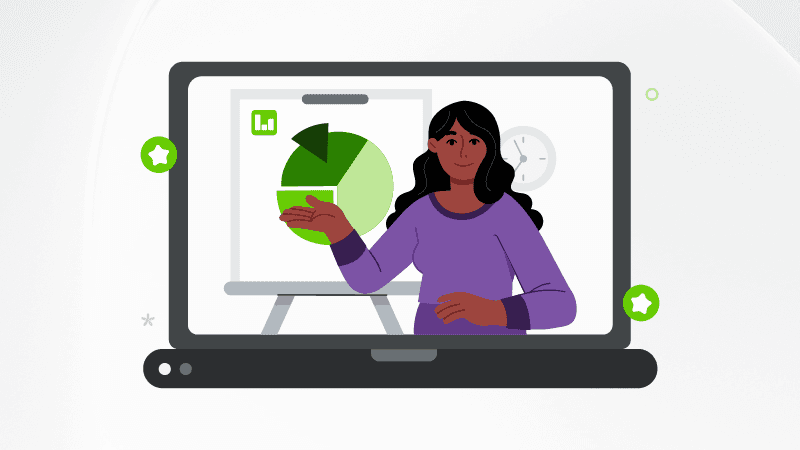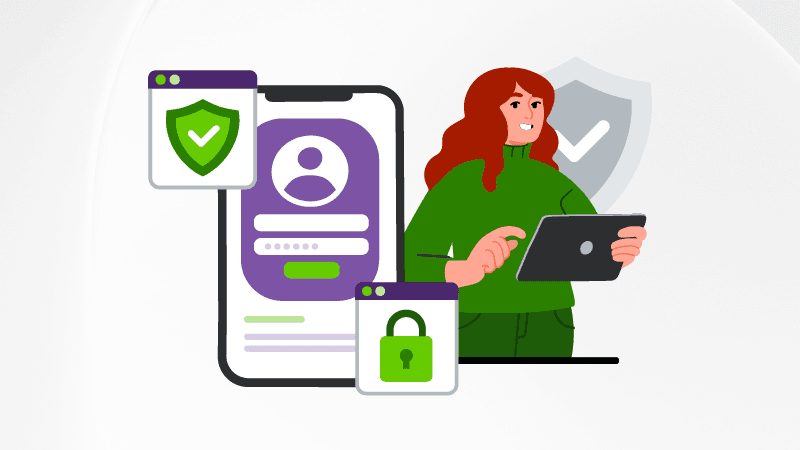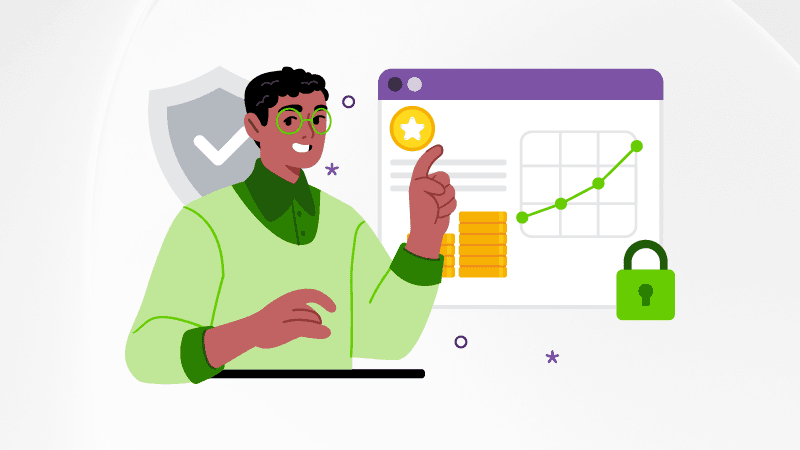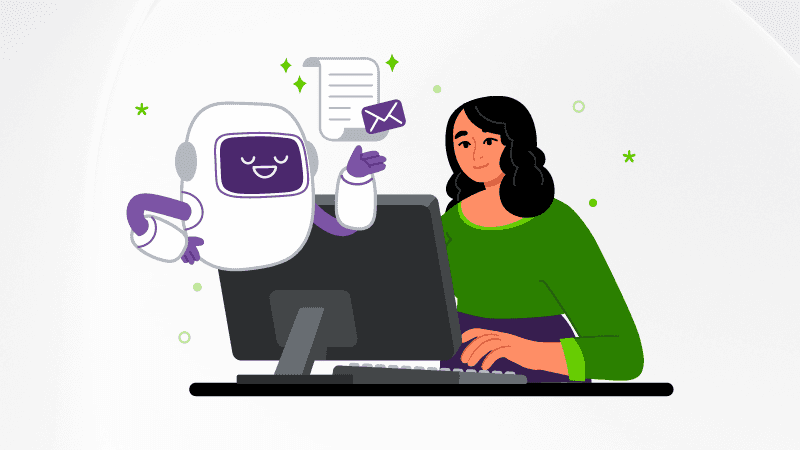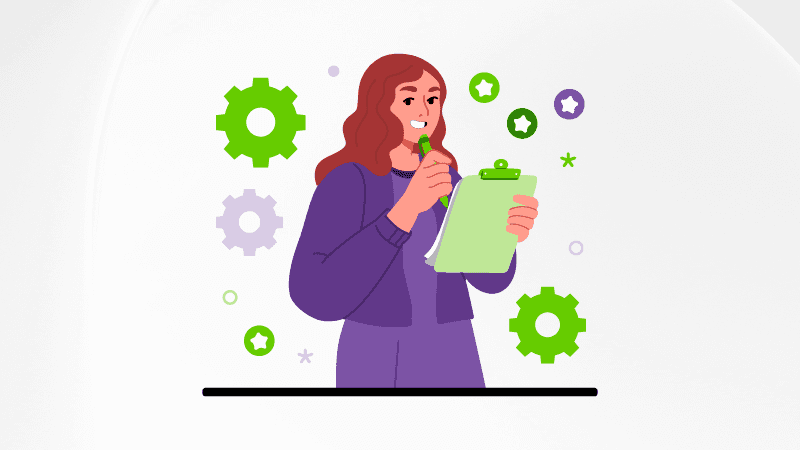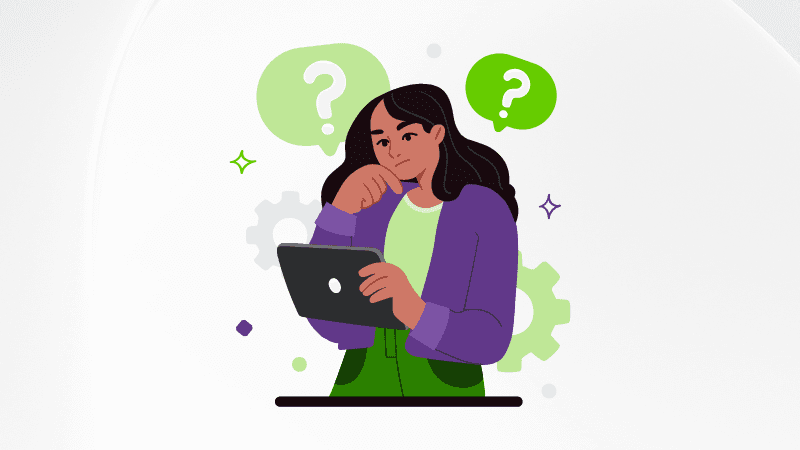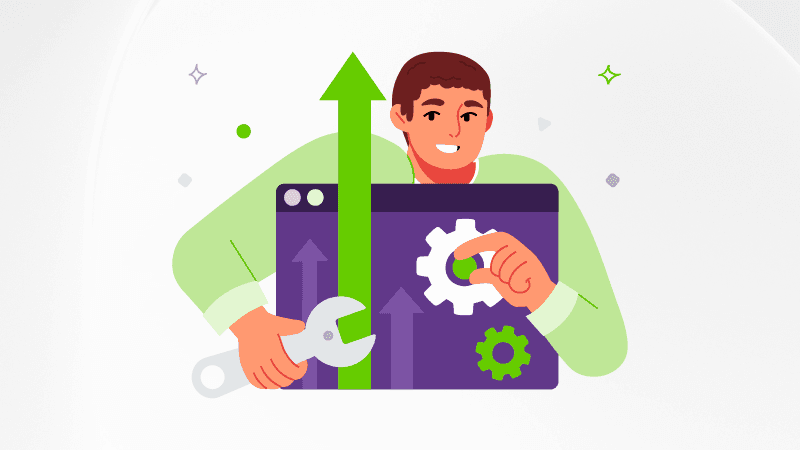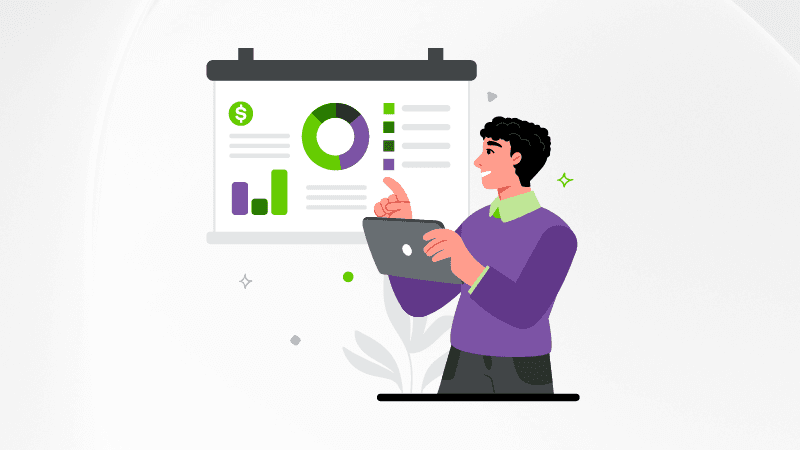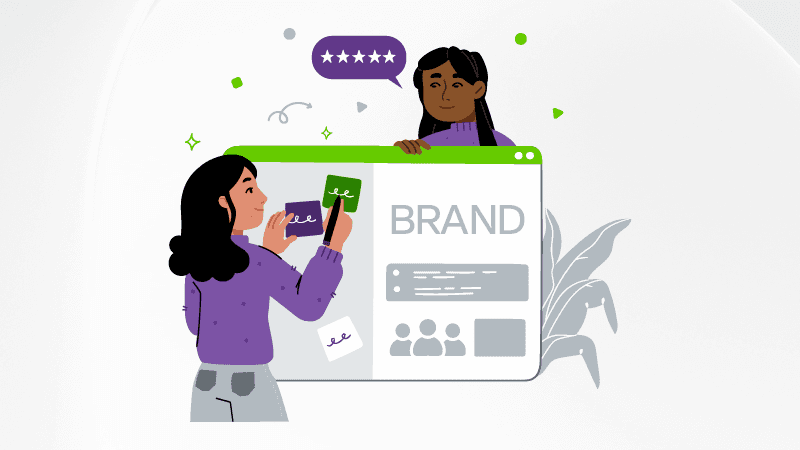Is automation the key to more human, personalized experiences?
On this episode, we explore practical strategies for maintaining authentic customer connections and how, paradoxically, automation can make your experiences more human — not less.
As brands scale, creating personalized customer experiences becomes increasingly challenging. Automation, when thoughtfully implemented, can create space for human team members to develop a deeper appreciation of specific customer needs and preferences, leading to better experiences and ultimately greater customer loyalty.
Listen for the compelling perspectives of Bal Mahal, senior product manager, intelligent automation at TELUS Digital, and David Wachs, founder and CEO of Handwrytten, as they share how brands can leverage automation to personalize customer experiences.
Show notes
For more insights on automation, check out the Questions for now episode What do people get wrong about automation?
Guests

Senior product manager, intelligent automation TELUS Digital
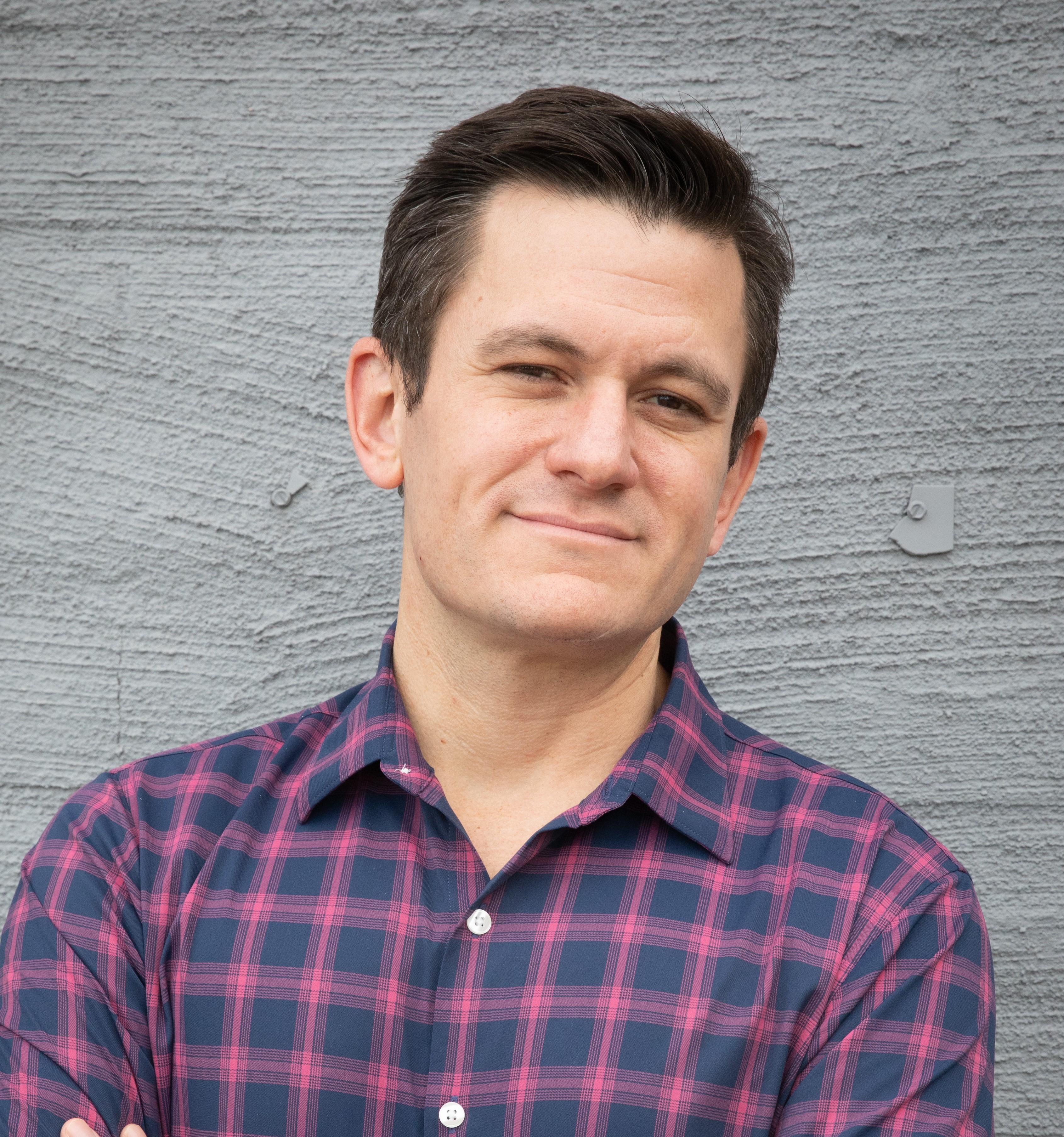
Founder and CEO Handwrytten
Episode topics
00:00 Introduction
01:07 Why is automation crucial for customer experience?
02:16 How can automation help brands address customer journey pain points?
06:39 How can automation enable personalization at scale?
07:11 What is Handwrytten and how does it leverage automation for personalized experiences?
10:19 What do customers expect out of a personalized experience?
12:30 What steps should brands take when launching automation initiatives?
15:38 How can brands measure the success of automated personalized experiences?
17:57 How can personalized experiences lead to cross-sell and upsell opportunities?
20:37 What are the risks of getting personalization wrong?
21:54 What's the difference between personal and personalized?
23:25 How can brands find avoid common mistakes in personalizing customer experiences?
24:53 What happens when you combine automation with human expertise?
26:16 Conclusion
Transcript
[00:00] Robert Zirk: Maintaining a personal relationship with a singular customer isn't all that difficult.
(Sound of a door opening and a chime ringing, followed by an atmosphere of jazz music and coffee beans being ground.)
[00:07] Bill: Hey Robert, the usual?
[00:09] Robert Zirk: That'd be great, Bill.
(Sound of a paper cup being placed on the counter and coffee being poured into it.)
[00:12] However, the dynamic changes drastically when you've got millions of customers.
(Sound of a large crowd of people talking amongst themselves.)
[00:20] To personalize customer experiences at scale, you've got to leverage technology in such a way that you can efficiently and consistently make your customers feel understood.
[00:30] Our guests today will explain how brands can leverage automation to shape personalized experiences that build stronger customer relationships. So today on Questions for now, we ask: Is automation the key to more human, personalized experiences?
[00:54] Welcome to Questions for now, a podcast from TELUS Digital, where we ask today's big questions in digital customer experience. I'm Robert Zirk.
[01:07] According to TELUS Digital technology partner Verint, 79% of brands believe automation is crucial for delivering great customer experiences.
[01:17] Bal Mahal is senior product manager for intelligent automation at TELUS Digital, leading strategy and execution for intelligent automation solutions, which, as she explained, is where traditional robotic process automation and AI meet.
[01:31] Bal Mahal: RPA focuses on automating any repetitive rule-based tasks while AI enhances these capabilities with more advanced features.
[01:40] RPA would act as more of a foundation, so it can handle structured data and predefined processes such as data entry and document verification, but AI will now add cognitive abilities to handle any unstructured data and it can also learn from historical information and make intelligent decisions by adding capabilities like natural language processing, machine learning and advanced analytics. This combination allows businesses to automate a wider range of tasks from simple, repetitive processes to more complex decision-making operations.
[02:16] Robert Zirk: In working closely with global and disruptive brands to leverage automation, Bal emphasized the importance of understanding where brands are currently on their digital transformation journeys and what pain points they're experiencing.
[02:30] For example, manual data entry errors like typos or incorrect transcriptions are a common cause of pain points along customer journeys for brands, resulting in the need to allocate time and resources to correct these errors as frustrated customers feel they're not receiving the time and care they expect.
[02:50] Automation solves those issues by handling repetitive tasks accurately, which is especially vital when dealing with sensitive information.
[02:58] Bal Mahal: An example where we did this is we automated the process of reading and receiving patient registration and medical documents. This prevents manual data entry errors and a manual error in a prescription could be life threatening, so it's really critical that we get it right. So when you automate something like that where you can have high risk of data entry errors, you are gonna solve that problem completely. We were able to automate that component and avoid all of the downstream risks with a hundred percent data accuracy when you have automation in place.
[03:36] Robert Zirk: Automation can also create efficiencies, speeding up tedious processes. Bal shared the example of an automotive financing company that needed to scan and assess loan applications from dealers on behalf of their customers.
[03:49] Bal Mahal: Our client had a team of 15 people who were reading and scanning these documents that were sent in. They were then inputting relevant information into systems and eventually processing these loan applications. The process was repetitive, it was tedious, and it was prone to entry errors. And it took about 15 minutes on average per order in the manual process.
[04:12] Robert Zirk: Once TELUS Digital integrated robotic process automation with intelligent document processing, documents were automatically scanned and processed, expediting the decision process for applicants.
[04:24] Bal Mahal: This resulted in 1.8 million dollars in annual savings for our client. The time savings and quick turnaround in data entry accuracy was very noticeable and meaningful for this customer and the company experienced clear efficiency gains and saw this drive more revenue due to quicker processing.
[04:41] Robert Zirk: Another example Bal mentioned involved automations at multiple phases to streamline field services appointments for internet, TV and smart home security setup.
[04:52] Bal Mahal: In the traditional model, you might have a technician come to do an install or a repair. What might happen is technicians get sick or there might be some day of issues that cause delays or cause problems. Customers might need to make changes. Maybe more work is required at a previous job causing a technician to be late in the next appointment. This could be a pretty terrible experience for a customer who's maybe taken a day off to accommodate a field technician's visit.
[05:23] So we looked at this in a multi-phased approach because there's many touchpoints that matter in this scenario and we incorporated automation where it made sense. The first piece we looked at was predictive workforce analytics and applying historical data to make predictions in an easy to understand dashboard. What this led to is, the day before the job, an automation would bundle these different jobs together and then assign a technician up to one hour before the job. Customers would receive a notification to manage their upcoming repair appointment and this happened automatically through a text message.
[06:03] Robert Zirk: The new system also improves efficiency for technicians as they're on-site at the appointment. Instead of calling in and waiting on hold for service-related questions, technicians can now get quick answers from an AI chatbot on their mobile devices.
[06:18] Bal Mahal: We also added another component for two weeks after the job where automation would search for any past due appointments that needed a new date. Sometimes these would get missed unless a customer would call us, but with the automation, it would automatically reschedule the job and assign a technician.
[06:39] Robert Zirk: We've just explored some of the strengths of automation — namely, how it can provide greater accuracy, streamline processes and deliver information proactively. All of these qualities can help brands scale their personalization efforts.
[06:54] Statista forecasts that, by 2026, brands will be investing $11.6 billion dollars on software and services that can enhance personalization in the customer experience. That's a 53% increase from 2021 levels.
[07:11] One such company, Handwrytten — that's Handwrytten with a Y — was the result of a light bulb moment after founder and CEO David Wachs struggled to keep up with handwritten notes he wanted to send to his employees and best customers.
[07:26] With the help of approximately 200 robots equipped with ballpoint pens, Handwrytten helps brands deliver handwritten note campaigns at scale using automation.
[07:36] David Wachs: It's a very interesting company in that we're both an art and a science. So we have graphic designers on staff that try to replicate somebody's handwriting, but then we also use AI and good programming and everything in between to create variation and mistakes and that type of thing too. So that's how we do the writing. And then we use AI along the system to really quality control our notes and make sure we're putting the right note in the right envelope and everything along the line.
[08:07] Robert Zirk: Outside of the style choices, David shared how Handwrytten's business customers can automate their personalized notes, either by supplying the data sets they wish to pull from or by leveraging integrations. For example, if you managed a national chain of jewelry stores and wanted to send handwritten notes to recent customers...
[08:26] David Wachs: We can include the store clerk that helped you, their number, the location of the store. We can dynamically insert all that. If there's like a little snippet between you and the store clerk, so you know, "Happy birthday to your sister!" or whatever that little snippet is, we can insert that in the body. So every single note can be custom.
[08:47] You can upload imagery on a one-to-one basis. We have clients that will put a picture of the exact watch, for example, on the card so that you open up the card and on the outside is a picture of that watch.
[08:59] Robert Zirk: David points out that thank you notes are the top use case for Handwrytten, citing the difference in customer perception between a fully-automated acknowledgement email and an automated, but personalized, handwritten thank you note.
[09:13] David Wachs: If I donate to a nonprofit and then I immediately get back an email from the donor management system that the nonprofit uses that says, "Thank you for your donation," that might check the box of thanking the donor, but does the donor feel thanked? They were thanked, but do they feel thanked? And that's where we try to step in is to try to elevate the customer interaction and really help people feel appreciated by their brands.
[09:40] Robert Zirk: David cited a piano tuning business as a case study of how automated personalization can lead to increased customer loyalty.
[09:47] David Wachs: So a very small business. They're only in your house once a year, tuning your piano. Your piano stays tuned for a full year. And then he automatically sends you a handwritten note using our service. A year later, when he returns to your house, that handwritten note is often standing up on the piano.
[10:04] So not only was it opened, not only was it read, it's put on display on the customer's most prized possession for a year. You know, so there's some real staying power there and that's real estate you, as a marketer, cannot buy.
[10:19] Robert Zirk: Customers expect that you'll have taken the time to understand their needs and preferences. This includes knowing their preferred communication channels and recommending products or services that match their interests and behavior. When you demonstrate this understanding, you build trust and loyalty.
[10:37] A McKinsey & Company study shows that more than 70% of customers expect personalized experiences, but cautions that poorly executed personalization can backfire, with 76% of customers becoming frustrated with brands who miss the mark.
[10:54] Robert Zirk: Bal notes that what matters most is how you leverage personalization to bring out the humanity in your customer experience.
[11:02] Bal Mahal: Customers are more likely to be loyal to a brand when they have positive experiences interacting with them, when they feel like they're actually being understood.
[11:10] Robert Zirk: A survey from Agility PR Solutions corroborates this, showing that 49% of consumers say they're more likely to buy from brands that get personalization right.
[11:21] Bal Mahal: A big focus is customer loyalty and how you create that. Personalization makes everyone's life a little bit simpler, a little bit easier and you can actually achieve proactive relationship building, which ultimately drives long-term value with customers.
[11:37] At first, personalization and automation might seem like they're at odds, but personalization thrives on human-like empathy while automation emphasizes efficiency and standardization. Any repetitive work and data entry minimizes the skillset of what human beings are actually capable of doing. We have the capacity for creative thinking, for rapport building, decision making and we can actually apply judgment real-time based on a specific customer's needs.
[12:08] So once you eliminate that repetitive work and automate that component, it leaves room and capacity for humans to engage with other humans. This provides the differentiated experience and personalization that people are looking for. It addresses that innate feeling of being seen and valued as an individual, and it builds connections and deeply human experiences.
[12:30] Robert Zirk: When launching a new automation initiative, Bal advises brands to adopt a strategic and methodical approach, starting with identifying and prioritizing opportunities for improvement in your CX processes.
[12:43] Bal Mahal: Where are you seeing those long average handle times? Where are you seeing these repetitive tasks that could benefit from automation? Any structured business processes with repetitive and rule-based processes are going to be best for automation, so you want to prioritize these and you really want to assess the business impacts and feasibility.
[13:06] Robert Zirk: Next, Bal recommends leaders develop a comprehensive automation strategy, echoing themes we discussed in our past episode, What do people get wrong about automation?
[13:16] Bal Mahal: It's important that you create a holistic plan that will align with your business goals and it's also important that you have clear objectives around automation. You have to establish a dedicated structure for automation within the organization.
[13:31] Robert Zirk: Once you have a strategy, Bal encourages leaders to ensure their organization is prepared for the change.
[13:38] Bal Mahal: Ultimately, there is change management involved when you're undergoing a digital transformation journey. So you want to establish clear roles and responsibilities for your automation initiatives. It's important to have standard operating procedures for automated processes as well as invest in training programs in order to prepare your employees for any new automated systems that they would be working with.
[14:02] Robert Zirk: And before you deploy automation, Bal recommends leaders focus on optimizing processes first.
[14:09] Bal Mahal: It's important that when you apply automation, you don't apply it to inefficient business processes. You want to analyze and optimize your existing processes as much as possible before automating them and you want to consider business process management alongside those efforts.
[14:26] I'd suggest designing executable processes that can be effectively automated. And this is where TELUS Digital also supports our customers. We will look at your business processes, ensure that we're helping you optimize and we're helping make suggestions on where you can do that before diving into the automation solution.
[14:45] Robert Zirk: So to recap, getting started with automation involves identifying and prioritizing opportunities, developing a comprehensive strategy, preparing the organization for change and optimizing existing processes. Once you're ready to implement automation, Bal suggests starting gradually with pilot projects.
[15:05] Bal Mahal: I think it's best to start with simple, small automations at first so you can really see the end-to-end impact and then refine as you go as well as continuously monitoring and adjusting based on any performance issues or feedback you receive from your team. It's important to maintain flexibility. You don't want to have a set and forget mentality with automation. You really want to regularly review and update your processes, stay adaptable to make sure you're meeting changing business needs and any technological advancements.
[15:38] Robert Zirk: According to a Salesforce survey, 37% of IT and engineering executives reported that their customer service department saw the most return on investment from implementing process automation, which they measured mainly through employee time savings, cost savings and faster operations.
[15:57] To gain insights on how an automation initiative is performing in the context of a personalized experience, Bal advises leaders to focus on customer loyalty and customer satisfaction metrics.
[16:08] Bal Mahal: How do your customers feel? Customer satisfaction scores, Net Promoter Scores, customer effort score and any sentiment analysis would be relevant. In addition to that, customer lifetime value. Are you retaining your customers? What's your repeat purchase rate? Is your churn rate increasing? Customer lifetime value should increase when you implement personalization appropriately. You should see better conversion rates from your personalized campaigns.
[16:38] The other thing I would consider is engagement metrics. So how much time are your customers actually spending on personalized content? How are they interacting with these recommendations? And are they actually clicking through and looking at the content that you've created? I'd look at all of those metrics as key metrics to determine that you've implemented personalization efforts appropriately.
[17:01] Robert Zirk: David also highlighted customer lifetime value and coupon redemption rates, citing the example of car dealerships that receive a better response rate to a handwritten note than a mass printed invitation.
[17:13] David Wachs: Certainly, we see increased interaction rates with brand, driving customers back to the website, but really, it's coupon redemption rate. Based off that, if you drill it down a level deeper, handwritten notes resulted in 27 times greater store visits. So being able to measure the store visits there and then also getting back to LTV, you know, if you send out an offer, what are the purchases coming from that offer versus purchases from somebody without receiving it through that channel? Then we're also talking brand sentiment, so Net Promoter Score-type numbers. A/B testing: how do you feel about this brand now? Doing A/B testing on sentiment and Net Promoter Score is very valuable.
[17:57] Robert Zirk: Bal notes that when you find the right balance of people, processes and technology, the loyalty and trust you build with customers can lead to cross-sell and upsell opportunities.
[18:07] Bal Mahal: When you have your systems working for you and not distracting you, you now have the capacity to listen and make appropriate recommendations. AI and automation can help with that, but upselling is about relationship and building trust. I personally don't like feeling like I'm being sold to, but I love it when I'm being listened to and someone's actually responding to my needs.
[18:31] So human interactions will allow for deeper understanding of customer needs and pain points, and this understanding enables more personalized and relevant product recommendations. Customers are a lot more likely to trust those suggestions from a person who's actually taken time to understand their situation. Human agents can provide more context-aware suggestions that an automated system might miss. They can actually explain those benefits that complement products in much more relatable terms and actually have a conversation, maybe throw in a joke here and there, and interact with a human in a real way versus feeling robotic or feeling sold to or feeling like you are speaking to a specific script.
[19:19] Robert Zirk: But while there are clear benefits to additional sales opportunities, Bal cautions that they should be seen through a customer-centric lens.
[19:27] Bal Mahal: We want to use data from human interactions that will continue to inform and improve our automated personalization efforts, but ultimately, we need to effectively leverage the human element in CX so that brands can create a win-win situation where customers are receiving more value and a company's increasing its sales and its customer loyalty.
[19:51] Robert Zirk: And David notes that not every interaction requires a call to action.
[19:55] David Wachs: I have this notion of what I call a "full stop thank you," which means you say "Thank you for being a customer," full stop. You don't ask for reviews, you don't ask for another purchase. And not everything that can get measured matters, not everything that matters can get measured. Meaning, you send somebody a thank you, you don't necessarily know if that's going to have an ROI, but in your heart of hearts you know it's the right thing to do and clients will appreciate that.
[20:23] So I think just doing the right thing, especially today where it's a global marketplace, companies and brands need to be very appreciative of their clients for choosing them out of all the possible alternatives out there.
[20:37] Robert Zirk: Up to this point, we've covered many benefits of automation-driven personalized experiences, but Bal cautions that if you don't maintain the right balance between automation and humanity, be it through too much automation or adding too many personalized touch points to the point where it becomes annoying or frustrating, it can have an inverse effect on the loyalty and trust you're trying to build with your customers.
[21:01] Bal Mahal: There's a massive cost to getting personalization wrong. Customer loyalty is up for grabs. Consumers are experiencing personalization and they will notice the inconsistency and difference in the various brands they're dealing with. Companies that embrace this will have more success and drive greater revenue and ultimately build more customer trust.
[21:22] Robert Zirk: David also noted the importance of finding the right balance. He spoke to the example of a fan club for a YouTube channel that sent handwritten notes but sent each fan the exact same note.
[21:34] David Wachs: And people started posting these to Instagram and that type of thing. And they weren't changing up the note at all. It was the same exact note for every single person. And I just thought, "Gee, go in and randomize it a bit, make it a little bit more personal, throw some interesting tidbits in there or whatever so that the secret's not ruined because of Instagram."
[21:54] Robert Zirk: The contrast between that example and the one we're about to hear demonstrates the value add that taking the time to cater to your customers brings to the overall experience. To that point, David advises brands to consider opportunities to create personal messages, even if they're not specifically personalized to individual customers.
[22:15] David Wachs: For example, we work with a online mattress company and when you receive the mattress there's no way in their logistics facility to know in advance who that mattress is going to and write a handwritten note for that specific recipient. But we still want that note to be personal. So what we do is we have eight or 10 different handwritten notes that are pre-done that just say, "Thanks! We hope you enjoy your first night on this mattress." And then it's personal in that it has a signed name of somebody at the organization with a doodle, like a drawing of somebody sleeping, dreaming of cats or a picture of the moon in the stars.
[22:56] So there's all these little personal elements, but it's not personalized. And I think that's a whole area that people really need to get creative in and figure out how they can apply that.
[23:09] Robert Zirk: On the other hand, too much personalization can come off as inauthentic at best and creepy and invasive at worst.
[23:17] David Wachs: You could include abandoned shopping cart information. That might be okay. But if you start getting really into the weeds, people might get spooked out by it.
[23:25] Robert Zirk: David advises brands to approach effective personalization at scale with simplicity and quality data.
[23:31] David Wachs: So what I mean by that is, if you went into our jewelry store and you bought a 18 carat gold Rolex, you don't want to say in that note, "Thank you for coming in and buying a 18 carat gold men's Rolex diamond..." That sounds ridiculous. Nobody would say that. You would just go up and say, "Thank you for coming in and buying your beautiful watch." And so rolling things up to that level is one good thing.
[23:54] I do think the biggest risk is including the inaccurate data elements. So, for example, we have these veterinarian practices that send out a handwritten note after euthanizing people's pets. If they include the wrong pet name, that is drastically detrimental to their brand.
[24:12] Robert Zirk: To avoid these types of errors, Bal reiterated that quality data management and continuous testing are crucial.
[24:20] Bal Mahal: We've talked a lot about balancing automation with humans, but you want to have human oversight in a lot of these scenarios, especially when you're dealing with customer touchpoints and you want to implement these personalization strategies very thoughtfully, very gradually.
[24:35] I would also suggest continuously testing and refining your personalization efforts and ensuring transparency and giving customers control over their data and experiences. When you invest in the right technology and skills, you can support personalization initiatives a lot better and avoid these pitfalls.
[24:53] Robert Zirk: As we wrap up, Bal encourages leaders to view automation as an enabler, allowing for greater capacity to build customer experiences that are more tailored to customer preferences while fostering human connections.
[25:06] Bal Mahal: One of the most important things is to see automation as an opportunity and a catalyst for positive change in your organization where the journey begins in automation around routine tasks and allowing businesses to unlock valuable time to shift employees' focus on creative problem solving and strategic planning.
[25:26] Instead of being bogged down by repetitive processes, teams can now cultivate new ideas and they can explore growth opportunities. A common thought around automation is that it just eliminates jobs, but I don't see it that way. I think automation transforms them. It actually empowers employees to engage more deeply with their work and fosters an environment for innovation.
[25:51] There's a harmony that needs to be created between personalization and automation. When you combine automation with human expertise, you ensure empathetic customer-focused interactions and this synergy will enhance customer trust by blending precision with empathy.
[26:16] Robert Zirk: Thank you so much to Bal Mahal and David Wachs for joining me and sharing their insights today. And thank you for listening to Questions for now, a TELUS Digital podcast.
[26:27] For more insights on today's big questions in digital customer experience, be sure to follow Questions for now on your podcast player of choice to get the latest episodes as soon as they're released.
[26:39] I'm Robert Zirk and until next time, that's all... for now.
Explore recent episodes
Hear from experts discussing the most timely topics in customer experience.
Suggest a guest or topic
Get in touch with the Questions for now team to pitch a worthy guest or a topic you’d like to hear more about.
Email the show
